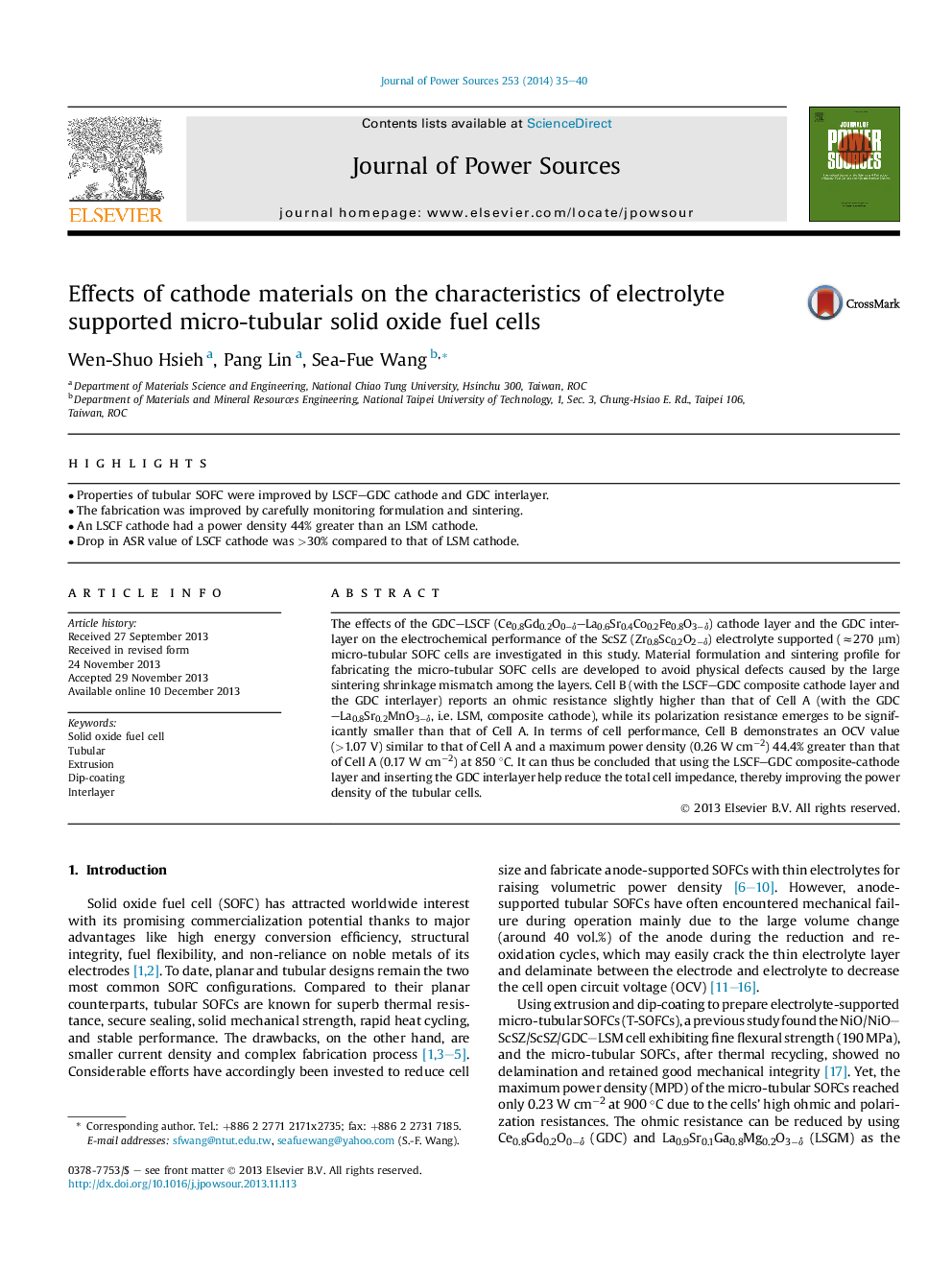| Article ID | Journal | Published Year | Pages | File Type |
|---|---|---|---|---|
| 1287076 | Journal of Power Sources | 2014 | 6 Pages |
•Properties of tubular SOFC were improved by LSCF–GDC cathode and GDC interlayer.•The fabrication was improved by carefully monitoring formulation and sintering.•An LSCF cathode had a power density 44% greater than an LSM cathode.•Drop in ASR value of LSCF cathode was >30% compared to that of LSM cathode.
The effects of the GDC–LSCF (Ce0.8Gd0.2O0−δ–La0.6Sr0.4Co0.2Fe0.8O3−δ) cathode layer and the GDC interlayer on the electrochemical performance of the ScSZ (Zr0.8Sc0.2O2−δ) electrolyte supported (≈270 μm) micro-tubular SOFC cells are investigated in this study. Material formulation and sintering profile for fabricating the micro-tubular SOFC cells are developed to avoid physical defects caused by the large sintering shrinkage mismatch among the layers. Cell B (with the LSCF–GDC composite cathode layer and the GDC interlayer) reports an ohmic resistance slightly higher than that of Cell A (with the GDC–La0.8Sr0.2MnO3−δ, i.e. LSM, composite cathode), while its polarization resistance emerges to be significantly smaller than that of Cell A. In terms of cell performance, Cell B demonstrates an OCV value (>1.07 V) similar to that of Cell A and a maximum power density (0.26 W cm−2) 44.4% greater than that of Cell A (0.17 W cm−2) at 850 °C. It can thus be concluded that using the LSCF–GDC composite-cathode layer and inserting the GDC interlayer help reduce the total cell impedance, thereby improving the power density of the tubular cells.
